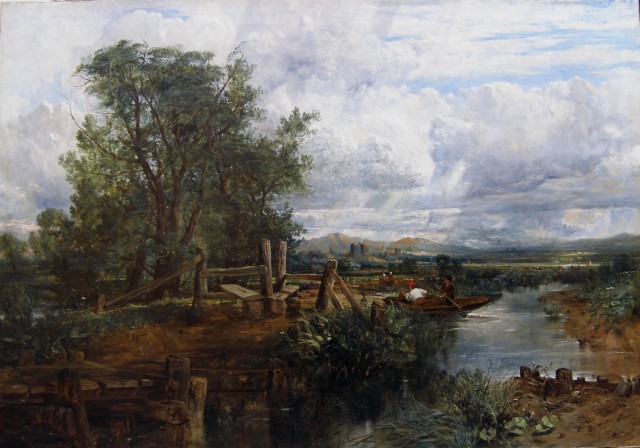Frederick William Watts
(1800-1862)
Frederick William Watts was a painter of quintessential English landscapes. Watts was greatly influenced by John Constable, and it is possible that he knew his great idol. For many years Watts was Constable's neighbour in Hampstead and doubtless attended his lectures held in the Assembly Rooms in June 1833 and July 1836. However, it is not known whether Watts and Constable met socially and it has been suggested that Constable was not well disposed towards his fellow landscape artists!
Indeed it was from Hampstead that Watts sent his first works for exhibition at the Royal Academy. These were the first of 76 paintings Watts exhibited at the Royal Academy, which, together with 108 at the British Institute and 65 shown in Suffolk Street indicate that he was a very prolific artist indeed.
As far as it is known, Watts painted only a small number of Continental subjects during the late 1820's, his preference being given to English scenery. Often he painted outdoors and was particularly interested in depicting locks, water mills and river scenes. He exhibited at the Royal Society of British Artists and the National Watercolour Society.
In 1879, Sir A. G. Temple described Watt's as having 'the vigour of Constable but with gentler touch'. However Watt's preserved his own distinctive style and colouring. He continued to work thirty years after Constable's death and his work is now enjoying a well-deserved appreciation.
The Victoria and Albert Museum in London have examples of his work.
Watts remained in Hampstead for 10 years before moving to Camden Town in 1831 and finally to Haverstock Hill 7 years later, where he spent the remaining 32 years of his life.
